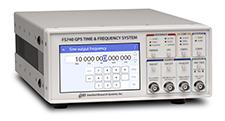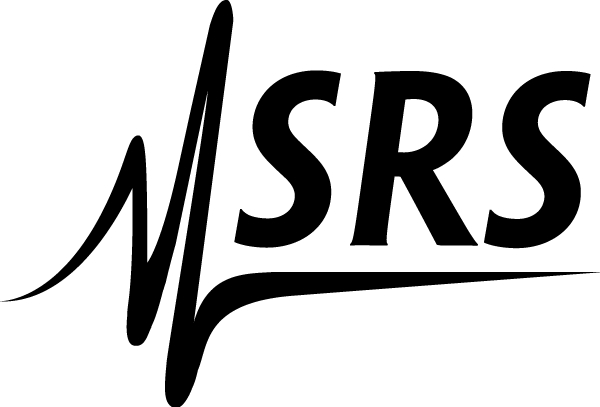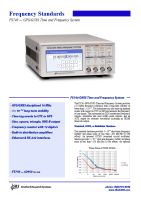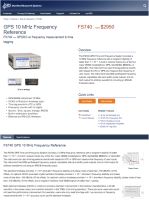Stanford FS740 GPS Time and Frequency System

Stanford FS740 GPS Time and Frequency System
GPS disciplined 10MHz reference

The FS740 provides a 10MHz frequency reference which is disciplined by GPS with a long term stability of better than 1 x 10-13. The instrument can also time tag external events with respect to UTC or GPS and measure the frequency of user inputs. The instrument has DDS synthesised frequency outputs, adjustable rate (and width) pulse outputs, and an AUX output for arbitrary waveforms including an IRIG-B timecode output.
Features:
- GPS/GNSS disciplined 10MHz
- OCXO or Rubidium timebase (opt)
- Time tag events to UTC or GPS
- Source - Sine, square, triangle, IRIG-B output
- Built-in distribution amplifiers
- Ethernet and RS-232 computer interfaces
The standard timebase provides 1 ื 10-9 short-term frequency stability and phase noise of less than -105dBc/Hz (10Hz offset). An optional OCXO (ovenised crystal oscillator) timebase provides 1 ื 10-11 short-term frequency stability and phase noise of less than -130dBc/Hz (10Hz offset). An optional rubidium timebase provides 1 ื 10-12 short-term frequency stability, phase noise of less than -130dBc/Hz (10Hz offset), and a long-term holdover (lost GNSS signal) of better than 1μs/day.
Both optional timebases (OCXO or rubidium) provide a dramatic improvement in the holdover characteristics, a 30dB reduction in the phase noise, and a tenfold reduction in the TDEV (rms timing deviation). There are some users who would not need this performance improvement. For example, users who only need time tags with 1μs accuracy or frequency measurements with 1 ื 10-8 accuracy could use the standard timebase.
For further information please contact us or download the datasheet.

